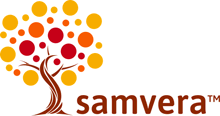Getting Started
Questions and answers
- Should I use Hyrax or Hyku for my application?
Hyrax is a Rails Engine that you can use to generate an application that you will deploy locally. This application is the place for you to customize layouts, styles and behaviors so that it suits your purposes. You will have to make some implementation decisions on your own (e.g. database, authentication, workers). It should be easy to upgrade your application from one Hyrax version to the next.
Hyku is a pre-generated application built using Hyrax. It comes with some choices already made for you (database, authentication, workers) and we recommend you stick with these defaults. Hyku offers some basic customization in the UI (text blocks, banner, colors) and we are working to expand the scope of these customizations. If you fork Hyku and start customizing, you should expect a painful upgrade process; however, active development is happening now to improve upgrading Hyku via the HykuKnapsack project. Hyku comes with scripts for deploying using Docker and the Amazon cloud services. It should also be possible to deploy this locally, although you must set up all the services yourself.
There are service providers in the community who can help by hosting Hyku for you or helping you to set it up locally. See the full service provider list on the Samvera.org website.
- Who provides technical support for Hyrax?
- Because Hyrax is open and community supported, there is no centralized or official technical support entity. One of the best ways to get technical support for Hyrax is to visit the Getting Started page on the Samvera wiki, where you can join the Samvera Slack workspace and sign up for the Samvera-Tech list. The Samvera community also holds a weekly technical call where all are free to pose questions.
- We're ready to test/move forward - what do we need to do to get started?
- Great to hear it! There are numerous ways to connect to the community, including our email lists and Slack workspace. You can find information about these and other ways to connect on the Getting Started page on the Samvera Community Wiki. You'll also want to check out the Hyrax Interest Group to connect with other implementers and the Hyrax community leadership team.
- Does Hyrax use the Portland Common Data Model (PCDM)?
- All repository objects created in Hyrax are modeled using the Portland Common Data Model.
- What do I do when I want to customize (or extend) Hyrax?
First, check the Samvera Development Knowledge Base to see if the aspect of the system you would like to customize has documentation, such as this section on customizing metadata (which is perhaps the most common customization).
You can also connect with other Hyrax implementers and the current technology team on the Samvera Slack workspace, on our weekly Tech Calls, and at calls for the Hyrax Interest Group.
